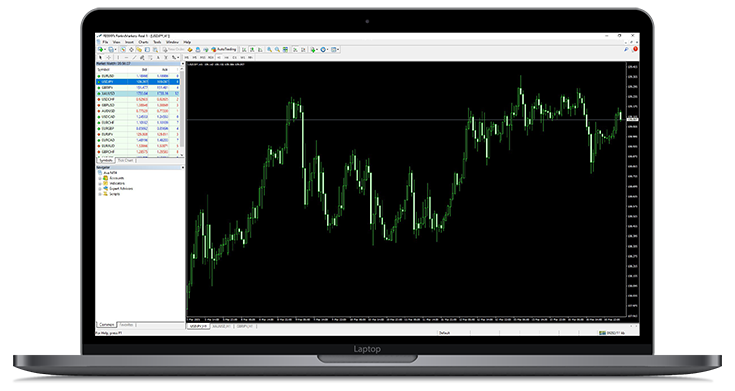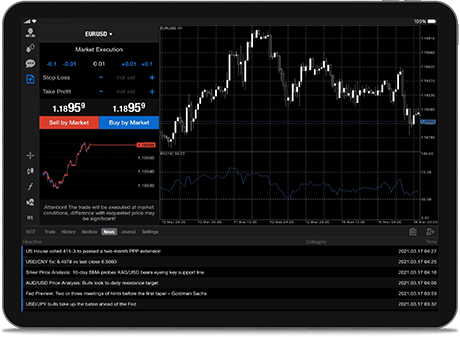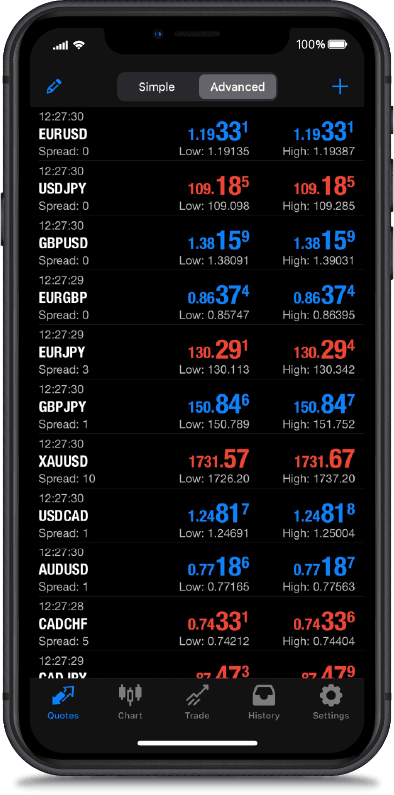In 1983, Tottenham Hotspur made history by becoming the first European football club to be publicly listed on a stock exchange. It would be the first team to do so, but by no means the last. By the 1990s, English football clubs up and down the league table were being floated on the London Stock Exchange. By the year 2000, no fewer than 20 English clubs were available for public trading. Two decades later, only one remains. So what went wrong?
Early days: 1983 - 1991
Spurs, in typical football fashion, were facing financial difficulties relating to player purchases and the construction of a new stand. To address this problem, long-time fan Irving Scholar purchased a controlling share in the club and floated Tottenham Hotspur PLC on the London Stock Exchange in order to raise funds. The listing was successful, selling a large number of shares and unburdening the club of its financial woes. With that said, the move was considered very unusual at the time because no had really done it before. Grimy locker rooms and shiny office buildings were not an obvious mix at the time. It is easy to forget that the prestige and colossal sums of money currently associated with football are a relatively modern aspect of the game. Back in the 1980s, things were different.Poor governance in the years that followed would drag Spurs back into the clutches of financial hardship, resulting in business mogul Alan Sugar acquiring a majority of the club in 1991. A decade later, Sugar ended up selling the lion’s share of his stake to investment firm ENIC International, which would go on to gradually increase its ownership of the club over the following years. By 2012, ENIC owned over 85% of the club and the remaining shares were delisted from the stock market. After nearly three decades, the club was once again privately owned.The listing of Spurs certainly raised a few eyebrows, but the next club to be floated left many investors in sheer disbelief. Among all others, Millwall became the second English football club to join the LSE in 1989. The sale raised £5 million and the funds were used in much the same way as those raised by Tottenham, namely stadium improvements and player signings. Alas, poor financial management would gradually chip away at the club and lead to a total collapse in share price. Millwall would only spend two seasons in the top flight, from 1988 to 1990, never to see such heights again. Over the following twenty years, the club’s finance went from bad to worse until eventually Chairman John Berylson simply bought out the remaining shareholders. Millwall was delisted from the London Stock Exchange and the club ended its 22-year stint on the stock market. Turns out everyone really does hate Millwall.The third club to go public was none other than Manchester United in 1991. In the years that followed, Man U would attract the ominous attention of American billionaire Malcolm Glazer, who would gradually buy more and more shares of the club. By 2005, Glazer had accumulated over 90% of the club’s shares, which under UK financial law allowed him to forcefully buyout the remaining shareholders and gain full ownership of the club. Manchester United PLC was delisted from the London Stock Exchange that same year to be run as a private business. Among other reasons, fans were furious with the takeover because Glazer used debt to purchase the shares, which he then loaded onto the club. The purchase saddled Manchester United with over half a billion pounds of debt and would continue to burden the club for years to come. Eventually, in 2012, Manchester United was relisted on the New York Stock Exchange to raise funds and cover some of those debts. Fans were duped once again however, as even though the IPO raised $233 million, only half of the funds went to the club itself, the rest going to the Glazer family. The club remains on the NYSE to this day.
Mid-90s stock market mania
Football’s foray into the stock market may have started out slowly, but the mid-90s would open the floodgates in earnest. 1995 would see the introduction of Manchester City and Preston North End. The following year opened the door to Chelsea, Leeds United, Queen’s Park Rangers, Southampton, Sunderland and West Bromich Albion. In 1997, the stock market would welcome no fewer than nine new clubs: Aston Villa, Birmingham City, Bolton Wanderers, Charlton Athletic, Leicester City, Newcastle United, Nottingham Forest, Sheffield United and Watford. Investors could now build awful stock portfolios filled with nothing but poorly performing football shares.But why were so many football clubs hell-bent on getting listed? The obvious answer is money. The creation of the Premier League in 1992 promised massive cash flows from TV deals, pumping money into football in a way that had never happened before. Floating on the stock market was also seen as a way to piggyback off the soaring financial markets at the time. The FTSE 100 tripled in value in the 1990s and people wanted in on the action. Fans were also compelled to buy shares out of a sense of loyalty to their club, wanting to own a part of something greater, even without the prospect of financial gain. Another simple reason is the fact that the process had been successful for Spurs and Man U, so why could other clubs not follow suit? Another reason is the emergence of the Alternative Investment Market (AIM) in 1995. Built as a sub-set of the London Stock Exchange, the AIM was designed to host smaller companies that would typically struggle with the crippling regulations found on the parent LSE. A stock market listing was seen as a fantastic way to finance stadium redevelopments and player signings, and so a lot of clubs did just that.
Football’s swift retreat
As explosive as football’s entry into the world of finance had been, it would be extremely short-lived. As quickly as clubs flocked to the markets in the late 1990s, the early 2000s onwards would see them leave in droves. Nottingham Forest would be the first domino to fall. Shares in the club were suspended in 2001, just four years after the initial listing after the club failed to publish any financial accounts for the previous year. Forest was delisted permanently the following year.Leicester City was also removed in 2002 after disastrous financial management pushed the club into administration. Chelsea exited the scene in 2003 after being bought out by Roman Abramovitch. Bolton quietly made its departure the same year after businessman Eddie Davies secured a majority ownership in the club. In 2004, Leeds and Sunderland would both say their goodbyes; the former after entering administration and the latter after deciding that being a private entity was better for business after all. West Brom was delisted in 2005 after Chairman Jeremy Peace acquired a majority stake. Aston Villa was bought out by American billionaire Randy Lerner in 2006.The following year was particularly bad for stock market exits. After accumulating substantial debts, Charlton Athletic was acquired and delisted in 2007 – a story shared by QPR. Manchester City was taken into private ownership after former Prime Minister of Thailand, Thaksin Shinawatra, purchased a majority stake in the club, while Newcastle was acquired by British billionaire Mike Ashley. Over the following years, one by one the remaining clubs would fall out of grace with the London Stock exchange, until Tottenham Hotspur, the club that kicked it all off, finally delisted in 2012. The football league and the stock market had officially parted ways. The only exception being Manchester United, which remained on the NYSE.
The European model
As crazy as stock listings were in the English Football League, the phenomenon was by no means contained to England. In Scotland, Celtic, Rangers, Hibernian and Hearts were all listed at one point or another, with the earliest listing also occurring as far back as the late 1980s in the case of Hibs. The craze also spread to Europe, although somewhat later on and to a much lesser extent.Juventus, Lazio and Roma would list on the Milan stock exchange. Portuguese teams Benfica, Sporting Lisbon and Sporting Braga would also find their way to market. Borussia Dortmund would be the only German club to be floated, on the Frankfurt Stock Exchange, while AFC Ajax would be the only Dutch team to feature on the Amsterdam Stock Exchange. In France, Olympique Lyonnais also achieved a listing, now under the OL Groupe holding company.Despite some appetite, attitudes towards football clubs were a lot more conservative in Europe and remain so to this day. Teams are often viewed as the property of the fans, not as investment vehicles for international finance. In the case of Barcelona FC, the club is quite literally owned by the fans and is one of the few clubs in the world to operate as a genuine democratic organisation.
Conflict of interest
It is fair to say that the EFL’s venture into stocks was a failure. On hindsight, it is easy enough to see why. The two worlds are almost totally incompatible. There is a direct conflict of interest between fans and investors because the former are interested in success on the pitch, while the latter are looking for a return on investment. It is true that higher league finishes and tournament wins will increase a club’s revenue, as well as generate more merchandise sales for the team, but that is not what the team is fighting for. The team and its fans want to win, to climb the ranks, to achieve glory. Typically, such success is achieved via better players and better managers. Spending large amounts of cash to acquire a better squad is obviously in the club’s interest in the short term, but can lead to financial problems down the road. As the club attracts more talent, the wage bill increases dramatically. If the results do not immediately follow, the club inevitably encounters debt problems.Another problem is inherent to the sport itself. Football is notoriously unpredictable, more so than most other sports. A few injuries here, a bad losing streak there, a couple of sacked managers later and suddenly a club can find itself in a dire position despite a massive increase in spending. Relegation is a huge blow, both on and off the pitch, leading to a direct fall in revenue from TV rights and gate receipts. Such a volatile environment is absolute poison as far as investors are concerned.From the perspective of the club, a stock market listing is a good way to raise a lump sum of cash, which is ideal for stadium renovations for example, but is a terrible funding model long term. For one thing, no one can accurately establish the fair value of club, meaning it is difficult to say whether one is under or overvalued. Investors have no reason to buy shares in a club based off the prospect of increased revenue or profit because ultimately, it is not a business. No one knows what future cash flows will look like because such flows are dependent on results, which are extremely unpredictable. Another problem is that because of the lack of market interest, shares in football clubs were typically very illiquid. They rarely changed hands. No volume. No open interest. No one to sell to. Clubs also had the added problem of stock market fees. A frequently cited reason for clubs opting to go private was that it cost money to remain listed on the London Stock Exchange, even on the AIM. Being a publicly traded company also puts a burden on the club to be more open with its books. Public companies are subject to financial regulations and disclosures that are not appealing to the murky world of football club finances. Private financing is much more flexible and also allows a greater degree of control from investors, which explains why so many clubs were simply bought by rich individuals or investment groups.
Mitigating factors
To play devil’s advocate, there is in fact a common factor behind the large number of delistings seen in the early 2000s. In the years prior, UK broadcaster ITV had set up a subscription service to compete with fellow broadcaster Sky Sports. The deal promised significant income streams to football clubs but unfortunately the service failed to attract enough subscribers and subsequently collapsed in 2002. The loss of revenue was a death blow to many clubs, particularly in the lower leagues. During the same period, financial markets were reeling from the fallout of the dot-com crash in the early 2000s. Between the peak on the last day of trading in 1999 and March 2003, the FTSE 100 underwent a brutal 50% correction, leading to a market-wide loss of investor confidence. The two events no doubt contributed to a number of clubs having to withdraw from the LSE.
Case study: Manchester United
At the end of the day, the results speak for themselves. After peaking in the early 2000s, the number of clubs listed on the LSE fell off a cliff, which is very rare for a new sector making its way to the stock market. The only sticking point is Man U. Why did it work for that particular club and no-one else? It could be argued that Manchester United was simply big enough to weather the storm. It had the recognition, the gravitas, the international appeal, the branding necessary to do it. Or perhaps the club remains floated solely due to the will of the Glazer family.Of course, a much easier argument to make is that keeping Manchester United listed on the NYSE does not benefit the club in the slightest. Commercially, the club has achieved substantial growth since the Glazer takeover, raking in vast amounts of cash through merchandise sales, broadcasting revenue and sponsorship deals. From a business perspective, the club is looking far healthier than in previous times. And yet, where are the results? Are the fans happy? How has Manchester United fared in terms of raw sporting performance? Although the club has added a few more trophies to its name, Manchester United has not won the Premier League since Alex Ferguson’s last season in 2012-2013. Last season, the club attracted ridicule from around the world by finishing in 15th place. Despair among fans grows with every passing season. Appalling displays on the pitch cannot solely be blamed on the ownership structure of course; the point is to illustrate the divide between the apparent commercial success of the club with what the fans are subjected to week in week out. We return to the argument made previously: there is a conflict of interest between fans and investors. Manchester United almost perfectly illustrates this. Success in the boardroom; a slide to mid-table irrelevancy on the pitch. Stock market valuations or positive cash flows obviously mean nothing to the average Manchester United fan – nor should they. The one remaining English team still listed on a stock exchange is in fact proof that the bridge between football clubs and stock markets is irreparably broken. The model is evidently flawed, something that most football clubs realised long ago.
#Football #Stocks #Manchester #LSE











